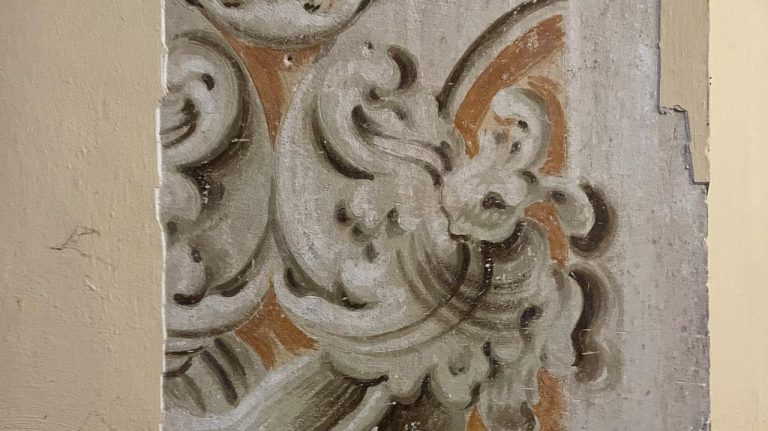While investigating a baroque church in Karczew near Warsaw, conservators found fragments of 18th century wall paintings.
The baroque church of St. Vitus in Karchev, built in 1732-1737, is undergoing architectural and conservation research, funded by the Conservatory of Monuments of Masovian Voivodeship.
“During the research in the northern church, which was probably built in the early 1740s, well-preserved polychrome fragments depicting illusionistic decorations were discovered. conservationists doing research is ongoing,” he said. Masavi conservatory.
The first church was wooden
As written on the website of the church, in the light of recent research, it can be assumed that the church in Karchev was founded in the 13th century. The first written documents come from the 16th century and refer to a wooden church built by the Masovian Karczewski family from the Jasienczyk coat of arms. He founded the village of Karchevo, which was part of the Otwock estate, and built a wooden church. Saint Bartholomew and Saint Vitus.
In 1548, with the consent of Sigismund I, Jan and Franciszek Karchevsi raised the settlement to the dignity of a city and gave it the right to Chelomno (the settlement lost its city rights in 1869 and regained it in 1957). Around 1602, the original church was burned down and a new wooden church was built. When the bishop of Poznań, Wawrzyniec Goslicki, came to visit in 1603, the church had not yet been consecrated.
The brick church was built by Crown Chancellor Kazimierz Belinski in 1632. Grand Marshal of the Crown Franciszek Belinski rebuilt it in 1733-1737 (the project belongs to Jakub Fontana). The temple was consecrated by the bishop of Płock, Andrzej Zaluski, in 1733, on the Sunday after the feast of the apostles Peter and Paul. In 1704, the king of Sweden, Charles XII and Stanislav Leszczynski, came to Karchev for two days. The oldest part of the Karczewski church is from 1541, which was originally added to the wooden temple. During the fire of the city in 1865, the church burned down again. The reconstruction was financed by the heirs of the time – the Kurtz family.
Meat processing facilities during the occupation
The church of the Karchev Cathedral suffered during the war, but all the damage was repaired and its original appearance was restored. In the 18th century, the city of Karchev became famous for its livestock fairs. During the Second World War, it became the center of the capital's meat products, and since the 19th century, Corpus Christi has been celebrated here with particular splendor.
The main source of the photo: K. Onisk / MWKZ

